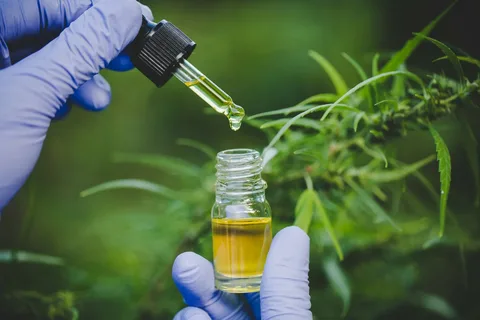CBD oil is paired with guacamole, salads, fish and meat, whole egg, coconut oil, and coconuts. Adding CBD oil to foods helps evade the awful earthy taste of the hemp plant. Quality CBD oil is determined by potency and purity levels.
CBD oil is manufactured from organic hemp plant extracts obtained by various extraction methods. The common elements used in manufacturing CBD oil are flavonoids, tetrahydrocannabinol (THC), terpenes, and cannabidiol (CBD). CBD oil is of three types; full-spectrum, broad-spectrum and isolate. The hemp plant has an earthy taste that nearly everyone wishes to avoid. Although there are various ways of evading the unpalatable taste of the hemp plant, including the use of capsules and topicals, tinctures remain the most effective. However, they are offered in natural form. So, how about you evade this taste by adding them to your food? If you are going for this option, which are the best foods to pair with CBD oil?
Guacamole
Guacamole is one of the best options for meals, especially at fast-food restaurants or at home. For lovers of CBD oil and guacamole, it’s time you evade the natural taste of the hemp plant by blending them. Zgair et al. (2016) noted that CBD oil works best with foods containing medium fatty acids. This is because the absorption rate is increased by the structure of the unsaturated and saturated structures. This will increase the fats in your entire meals suitable for weight gain.
Salads
Salads are common at fast foods across the USA. These are meant to improve the general health and wellness of the consumers. Users who wish to add to the health and wellness benefits of salads alongside CBD oil, especially those who wish to crease fats in the body. Blending CBD oil with salads is easy and fast compared to other meals. This will also help mask the natural taste of the hemp plant. The dairy-free ranch is the best option for making a salad infused with CBD oil since it’s also a primary source of fats.
Fish and Meat
A large population in the U.S has meat in every serving per day. Fish and meat are suitable for fats and oils for main dishes. Unlike meat, fish serves best for Omega-3, which might complement CBD oil. However, how you use it determines whether it will render the benefits. Although most people prefer preparing either meat or fish with CBD oil, it’s not the best option. Hazekamp (2018) showed that exposing CBD oil to heat lowers its potency levels and interferes with its effectiveness. Therefore, it’s important to avoid exposing CBD oil to too much heat. It is recommended to add CBD oil to either of the two after cooking. Also, allow them to cool down before adding considerable amounts.
Whole Eggs
Most consumers find eggs unhealthy due to their cholesterol levels. However, that might not be the case. The blood cholesterol is not affected by the one found in eggs. Notably, eggs are packed with vitamins, healthy fats, nutrients, and proteins. A blend of eggs and CBD oil is a perfect option for those going for the best benefits of CBD, including weight loss. The blend works best since eggs are nutrient-dense. Æterna (2022) discovered that taking CBD oil reduces your appetite. Taking it alongside CBD oil will work best since the eggs will make you full for a long time.
Coconut Oil and Coconuts
Nearly 70% of CBD oil manufacturers blend their products with MCT or coconut oil. Stella et al. (2021) showed that coconut oil contains bioavailability features, improving CBD oil’s absorption rate and its supplements. As a result, CBD oil products blended with coconut oil are likely to offer more rapid effectiveness. Besides, they are a great source of vitamins, minerals, and healthy fats. Notably, cooking with CBD oil is the best option since it has fewer calories resulting in obesity.
How Much CBD Oil Should I Add To Foods?
Adding CBD oil doesn’t mean you are to adjust the concentrations. Although CBD oil’s impact on foods might be delayed, it is the same with similar concentrations. This is because the foods have to be absorbed before the impact occurs. However, the impact only interferes, and potency levels are affected when exposed to heat. Heat lowers CBD oil quality due to reactions.
The Best Way To Taking CBD Oil
Although there are various ways of taking CBD oil, including adding in foods, topicals, capsules, and oral and sublingual use, not all will offer the desired rapid effectiveness. For rapid effectiveness, sublingual use is the best. How do you go about it? Take a considerable amount of CBD oil using a dropper and add to avoid overdosing. Using the dropper, place the measure under your tongue and hold it for about 60 seconds before swallowing. It improves the rate of absorption, giving rapid effectiveness.
How To Choose The CBD Oil To Add To Your Foods
CBD oil can only be effective in food if it’s high quality. Several factors should consider as follows;
Potency and Purity Levels
No one wishes to take contaminated CBD oil that will expose them to the development of chronic diseases such as cancer. Also, since most CBD oil companies have labeled wrong potency levels from those in the products, people should pay attention to potency levels to avoid unknowingly overdosing. Therefore, take CBD products assessed on purity levels by a certified independent lab for the accuracy of the lab results. Ensure CBD oil is void of solvents and heavy metals that would harm your health. Also, pick CBD oil manufactured with CO2 organic hemp extracts. Although various extraction methods, such as ethanol, are likely to contaminate the CBD oil, leaving CO2 is the best alternative.
Conclusion
There are various methods of taking CBD oil, including adding in favorite foods for sublingual use. Although sublingual use is the most appropriate, are you ready to deal with an awful earthly taste of the hemp plant? This leaves adding CBD oil to your favorite foods the best option. However, the impact takes time, calling for patience. Notably, adding CBD oil doesn’t mean you have to increase the amount or potency levels. Take the same amounts and wait for the impact, which only occurs after digestion. Common CBD oil foods are eggs, meats, fish, and salads.
References
Æterna’s, L. (2022). See All. Culture.
Hazekamp, A. (2018). The Trouble With CBD Oil. Medical Cannabis And Cannabinoids, 1(1), 65-72.
Stella, B., Baratta, F., Della Pepa, C., Arpicco, S., Gastaldi, D., & Dosio, F. (2021). Cannabinoid Formulations And Delivery Systems: Current And Future Options To Treat Pain. Drugs, 81(13), 1513-1557.
Zgair, A., Wong, J. C., Lee, J. B., Mistry, J., Sivak, O., Wasan, K. M., … & Gershkovich, P. (2016). Dietary Fats And Pharmaceutical Lipid Excipients Increase Systemic Exposure To Orally Administered Cannabis And Cannabis-Based Medicines. American Journal Of Translational Research, 8(8), 3448.
Kristina Shafarenko is a relationship and health and wellness psychologist and a part-time freelance lifestyle writer covering health and fitness, sex, sexual wellness, and relationships. When she’s not writing, you can find her planning her next getaway, taste-testing every coffee spot in sight, and lounging at home with her cat, Buddy.
- What is Cannabidiol? - February 22, 2023
- Four ways to use CBD oil effectively - October 22, 2022
- What are CBD edibles? - October 22, 2022















